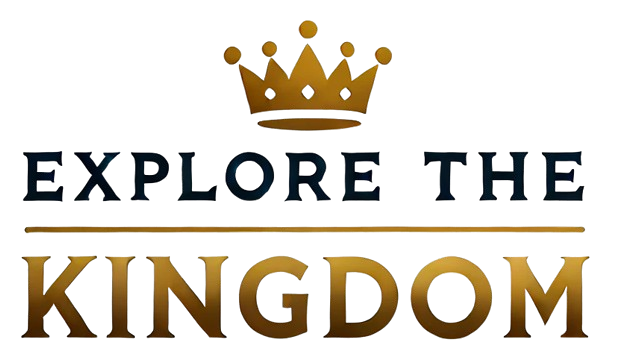Governance structure is a vital element of any organization, encompassing the frameworks, policies, and processes that guide decision-making and accountability. Whether in the public sector, private enterprises, or non-profit organizations, a well-defined governance structure promotes transparency, fosters responsibility, and enhances the overall effectiveness of operations. This article will explore the key components of governance structures, their importance, and how they can be effectively implemented.
What is Governance Structure?
Governance structure refers to the system by which organizations are directed and controlled. It includes the distribution of rights and responsibilities among different participants in the organization, such as the board of directors, management, shareholders, and other stakeholders. This framework establishes how objectives are set and achieved, monitors performance, and manages risks.
Key Components of Governance Structure
1. Board of Directors
The board of directors is at the heart of the governance structure. It is responsible for overseeing the organization’s activities, providing strategic direction, and ensuring that the organization operates in its stakeholders’ best interests. The board is typically composed of elected or appointed members with diverse skills and experiences.
Responsibilities of the board include:
– Setting the organization’s strategic goals.
– Approving budgets and financial plans.
– Monitoring organizational performance.
– Ensuring compliance with laws and regulations.
– Appointing and evaluating the performance of senior management.
2. Management Team
The management team is responsible for the organization’s day-to-day operations. They implement the board’s strategies and ensure that the organization achieves its objectives. Management typically includes executives such as the CEO, CFO, and other senior leaders.
Key responsibilities of the management team include:
– Developing operational plans.
– Managing resources effectively.
– Reporting performance to the board.
– Ensuring employee engagement and motivation.
– Implementing risk management strategies.
3. Stakeholders
Stakeholders are individuals or groups interested in the organization’s performance and outcomes. They can include shareholders, employees, customers, suppliers, and the community. Understanding stakeholders’ needs and expectations is essential for effective governance.
Engaging stakeholders involves:
– Regular communication and feedback mechanisms.
– Identifying their interests and concerns.
– Involving them in decision-making processes when appropriate.
4. Policies and Procedures
Governance structures are guided by policies and procedures that help define how the organization operates. These documents outline the rules and regulations governing behavior within the organization and provide a framework for decision-making.
Important aspects of policies and procedures include:
– Code of conduct and ethics.
– Conflict of interest policies.
– Whistleblower protections.
– Financial controls and reporting mechanisms.
5. Committees
Committees play a crucial role in governance structures by focusing on specific areas of responsibility. Common committees include the audit committee, compensation committee, and governance committee. Each committee typically comprises board members and may include external experts to provide additional insights.
The roles of committees may include:
– Conducting in-depth reviews and assessments.
– Recommending actions to the board.
– Ensuring compliance with regulations.
6. Risk Management Framework
An effective governance structure includes a robust risk management framework that identifies, assesses, and manages risks that could impact the organization. This framework should be integrated into the organization’s overall strategy and operations.
Key components of risk management include:
– Risk identification and assessment.
– Development of risk mitigation strategies.
– Continuous monitoring and reporting of risks.
The Importance of Governance Structure
A well-defined governance structure offers numerous benefits to organizations, including:
1. Enhanced Accountability
Governance structures establish clear lines of accountability, ensuring individuals and teams understand their roles and responsibilities. This clarity helps prevent confusion and overlaps in duties, leading to more effective decision-making.
2. Improved Transparency
Transparency is a cornerstone of good governance. A transparent governance structure promotes trust among stakeholders by openly sharing information about decision-making processes, financial performance, and operational outcomes.
3. Effective Risk Management
A strong governance structure enables organizations to identify and manage risks effectively. Organizations can proactively address potential threats and vulnerabilities by integrating risk management into the governance framework.
4. Better Strategic Decision-Making
Governance structures facilitate informed decision-making by providing a systematic approach to evaluating options and considering stakeholder perspectives. This leads to more strategic and deliberate choices that align with the organization’s objectives.
5. Increased Stakeholder Engagement
Engaging stakeholders in the governance process fosters a sense of ownership and commitment. When stakeholders feel heard and valued, they are more likely to support the organization’s initiatives and contribute to its success.
6. Regulatory Compliance
A well-structured governance framework helps organizations comply with relevant laws and regulations. Organizations can mitigate the risk of legal issues and reputational damage by establishing clear policies and procedures.
Implementing an Effective Governance Structure
To establish an effective governance structure, organizations should consider the following steps:
1. Define Governance Objectives
Clearly outline the objectives of the governance structure, including desired outcomes and key performance indicators. This will provide a roadmap for developing the governance framework.
2. Engage Stakeholders
Involve stakeholders in the governance design process to ensure their needs and concerns are addressed. This engagement can be surveys, focus groups, or open forums.
3. Establish Clear Roles and Responsibilities
Define the roles and responsibilities of the board, management, and committees. This clarity will help ensure everyone understands their duties and can work together effectively.
4. Develop Policies and Procedures
Create comprehensive policies and procedures that govern organizational behavior. Ensure these documents are accessible and regularly reviewed to remain relevant and effective.
5. Implement a Risk Management Framework
Integrate a risk management framework into the governance structure to proactively identify, assess, and manage risks. Regularly review and update the risk management strategies as needed.
6. Monitor and Evaluate Governance Effectiveness
Establish mechanisms for monitoring and evaluating the effectiveness of the governance structure. Regular assessments and feedback will help identify areas for improvement and ensure the governance framework remains aligned with organizational objectives.
Conclusion
In conclusion, a well-designed governance structure is essential for organizations seeking to achieve their goals and maintain stakeholder accountability. Organizations can enhance their performance, manage risks, and foster stakeholder trust by understanding the key components of governance, recognizing its importance, and implementing effective practices. A robust governance structure lays the foundation for sustainable success, enabling organizations to navigate the complexities of today’s dynamic environment. As governance continues to evolve, embracing best practices and adapting to changing circumstances will be crucial for organizations striving to thrive in the 21st century.



